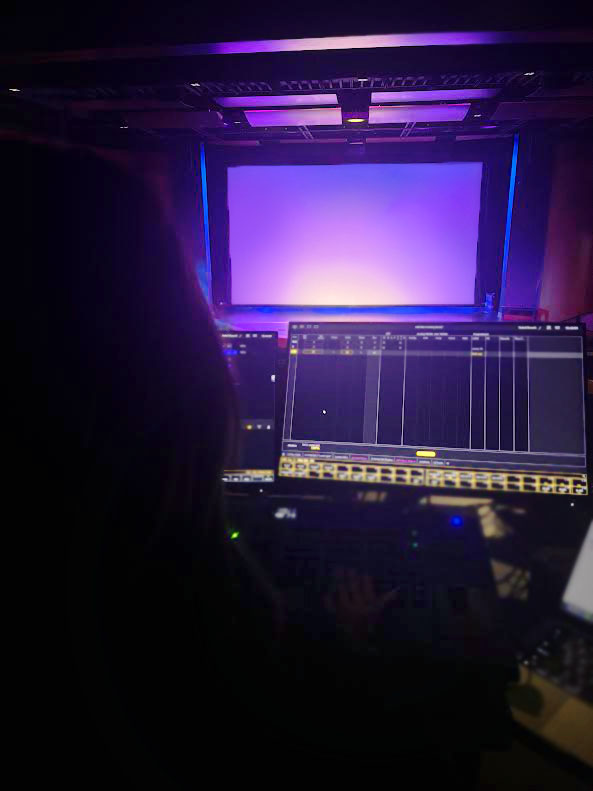
Lola Pavlak
Harper Clark in the lighting booth
Ever idly wonder how the lights in the theater work? How they do all those color changes for the musicals? Who they’ve got sitting around during the dance shows doing the transitions? Perhaps you assumed they pay someone for it, or have a staff member do it.
Impressively, the one doing all those effects has been a student. The student tech leader Harper Clark (‘26) has been doing the lights for almost every show for the past two years; everything from theater productions to dance and music shows to the occasional Big Night Out. It’s a lot of work and involves a fascinating skill set, interestingly artistic and surprisingly involved.
The lights in the new theater building are controlled by software called Element 2, which is connected to the lights and can change their brightness and color. The software allows Clark to prepare the lights for a show, and program the settings for all the lights into separate cues for each lighting change.
The lights are chosen to better convey the mood of a scene, or feeling of a song. This is where it is important to have a strong grasp of color, to know when to use what colors and how to mix them.
In an interview, Clark said that they’ve been doing this long enough that they can program scenes quickly and intuitively. Even while shows are running, they often make on-the-fly changes to lights when people move out of spots, or set pieces are poorly illuminated.
Often, the greatest obstacle to a show is the software itself. Being so complicated, it’s easy to accidentally press a button or change a setting and ruin hours of work.
Clark spoke about their worst lighting fiasco to date, on one of the first shows they did. During programming for the ‘23-’24 dance show: “and this was before we did Guys and Dolls. And this is the first time we’re really using the lightboard in the new building, and I didn’t really know how to do it yet, but they’re like ok, you’re going to do this whole show. By yourself.”
“I had all these light cues written, and I’m going through them and looking at them as they’re rehearsing,” and it’s important to note that the show is mostly just alternating between bright light and dark light cues, one to one, for the whole thing. “[But] unbeknownst to me, there was this setting turned on, called tracking, and so every time I updated a cue, it copied the update to the rest of the cues.”
It was the rehearsal on the day of the show: “I changed some stuff on that cue to be brighter, and so all of my blackouts were suddenly bright, and I didn’t know the tracking was on or what it was, which means I had to redo the values (brightness) of every single cue of the show.”
In the end they had to put hours in to frantically fix the cues pre-show, but managed it in time. That was a few years ago, and they have since become the foremost expert on the light system in the building. Clark is graduating this spring, and so they are now spending time training new freshmen for the role. Once they graduate, their tech role will be handed down to new students.